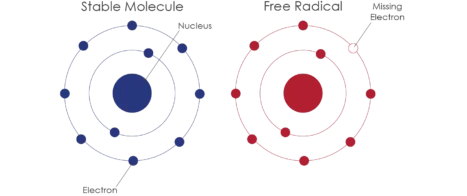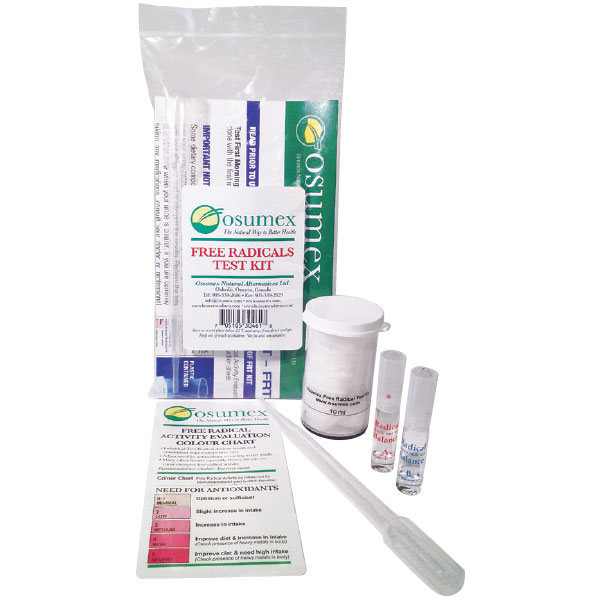Aging and Free Radicals

What is a Free Radical?
In very simple terms, a free radical is an atom with an “unpaired electron”. This atom is called a free radical and is “very reactive” in that it tries to stablize itself by seeking out another electron from another otherwise stable atom with “paired electrons”. This action results in a “chain reaction” and that is when “excessive free radical activity occurs”.
What is MDA?
MDA (Malondialdehyde) is a highly reactive three carbon dialdehyde produced as a byproduct of polyunsaturated fatty acid peroxidation and arachidonic acid metabolism. MDA readily combines with several functional groups on molecules including proteins, lipoproteins, and DNA.
MDA-modified proteins may show altered physico-chemical behavior and antigenicity. Antibodies to MDA will help to visualize the MDA-adducts.
Lipid peroxidation is a well-established mechanism of cellular injury in both plants and animals, and is used as an indicator of oxidative stress in cells and tissues. Lipid peroxides, derived from polyunsaturated fatty acids, are unstable and decompose to form a complex series of compounds.
These include reactive carbonyl compounds, which is the most abundant malondialdehyde (MDA). Therefore, measurement of malondialdehyde is widely used as an indicator of lipid peroxidation.
Increased levels of lipid peroxidation products have been associated with a variety of chronic diseases in both humans and model systems. MDA reacts readily with amino groups on proteins and other biomolecules to form a variety of adducts, including cross-linked products.
MDA also forms adducts with DNA bases that are mutagenic and possibly carcinogenic. DNA-protein cross-links are another result of the reaction between DNA and MDA.

Aging
Aging is characterized by decrements in maximum function and accumulation of mitochondrial DNA mutations, which are best observed in organs such as the brain that contain post-mitotic cells.
Oxygen radicals are increasingly considered responsible for part of these aging changes. Comparative studies of animals with different aging rates have shown that the rate of mitochondrial oxygen radical generation is directly related to the steady-state level of oxidative damage to mitochondrial DNA and is inversely correlated with maximum longevity in higher vertebrates.

Health Care Professionals
Register as a Health Care Practitioner today and experience the benefits of professional Osumex account including Osumex Natural Health Products and Urine (non-invasive) Testing kits at special practitioner’s prices.

